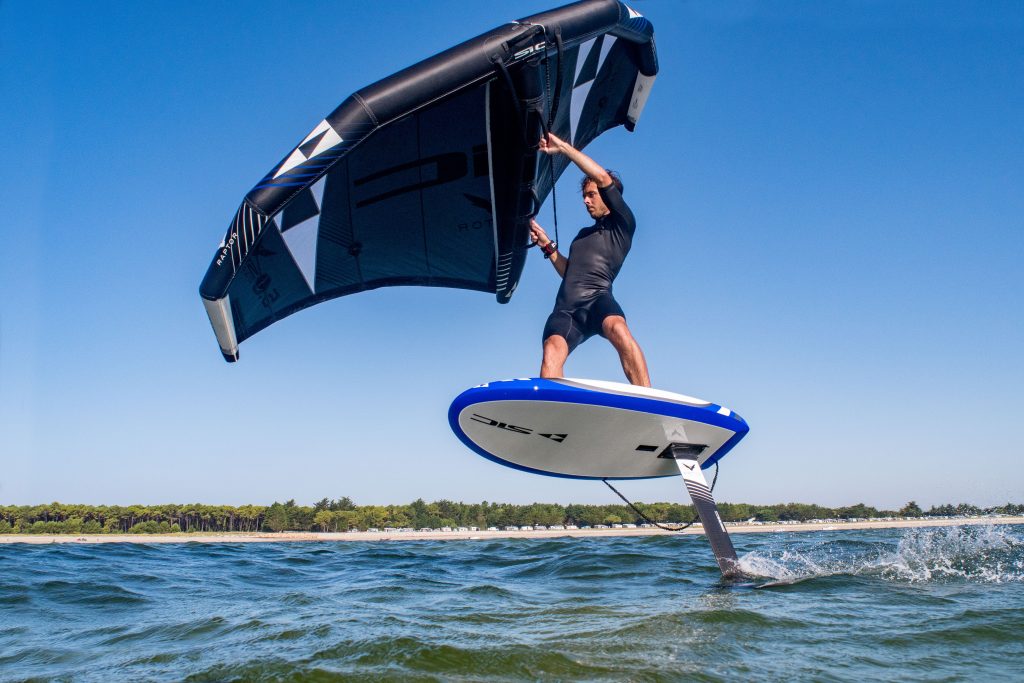
It costs quite a bit of money to be able to live at the “shore,” as they say in New Jersey. It might cost a bit less to live in Narragansett or Charlestown, but it is still a “shore” lot of money living anywhere near any ocean frontage on the East Coast. And this also applies to the new wave of water sports that are not geared for the average city dude who has come to the area to visit.
The new gizmo in town could be coined as the seven deadly sins of the hipster crew that has embraced it. They include in no specific order: foil boarding, wind foiling, kiteboarding, kite foiling, wing boarding, wing foiling, and kite/foil surfing. This new rage is an offshoot of windsurfing, which has lost popularity with the jet set in recent years.
One big draw to the new ocean sports is the price. There is no limit on how much you can spend on gadgets and gear. An average wing costs $1,000 and foil $1,500-$2,000. Multiply this by the various sizes of the foils and wings, add accessories, and you can be spending upwards of $10,000 for a day at the beach with your quiver of toys.
What exactly is foil boarding? It is the sport of riding a small surfboard facsimile which has a hydrofoil attached to it, instead of a fin. This allows the surfboard to fly above the water. As soon as the board gains speed, the hydrofoil will lift the surfboard out of the water due to kinetic energy.
SIC-Maui pro foil and wing rider Ed Miller swears by the new sport. “I live on a lake in Pennsylvania that is not near the beach. I can go out and ride for hours in almost any weather condition.” He did admit that learning the sport, which covers all seven categories, is tough. “No one can easily teach you how to ride these boards,” he noted. “It takes a lot of hours and wipe-outs to master the sport. Unless you are an accomplished windsurfer, there is a substantial learning curve. But once you get it down, it is better than anything else you have experienced.”
There are several variations of the sport, beginning with kite boarding. The rider attaches to a kite and can both surf waves and ride in flat water, if there are favorable winds. When wing surfing or flat-water riding, the small, semi-rigid sail is not attached to the rider, making it more difficult to retrieve in the water. Adding a foil board to these set-ups makes the rider less dependent on the wind conditions.
While there are not many foil or kite boarders surfing in and around area beach breaks and reefs, those that are, are not always looked upon kindly. As one local surfer put it, “They have taken the place of the paddle board surfer, as the new pest in the water. They have no wave riding etiquette and think they can take any wave.”
According to Chris Decerbo, National Sales Manager of Tahe/SIC-Maui USA, which is probably the largest manufacturer of paddle boards, surf boards, windsurfers, and foil boards in the world, the sport is here to stay. “Wing foiling continues to grow in interest and popularity. The wing combines the sensations of windsurfing and kiteboarding together, with the board flying above the water on its foils. Enthusiasts from the other wind sports have been the early adopters, but now we see many more folks coming to learn and try. We see this new category growing fast.”
Samantha Ladd, who oversees warranty and repair problems at SIC-Maui USA, points out that the equipment used in these sports are constantly under tremendous stress from use, and must be maintained. “Wings can easily get a puncture, even from beach sand, and need to be fixed as soon as possible. Screws in foils should be gel-coated to prevent seizing up,” she noted. “With a new sport like this, equipment becomes obsolete quickly, as the sport evolves. Riders need to be aware of this as well.”
In the meantime, my best advice is to steer clear of foil boarders. The razor-sharp bottom on the foils have caused injuries during collisions. If you are intrigued by the sport, do yourself and others a favor: Take a lesson.
